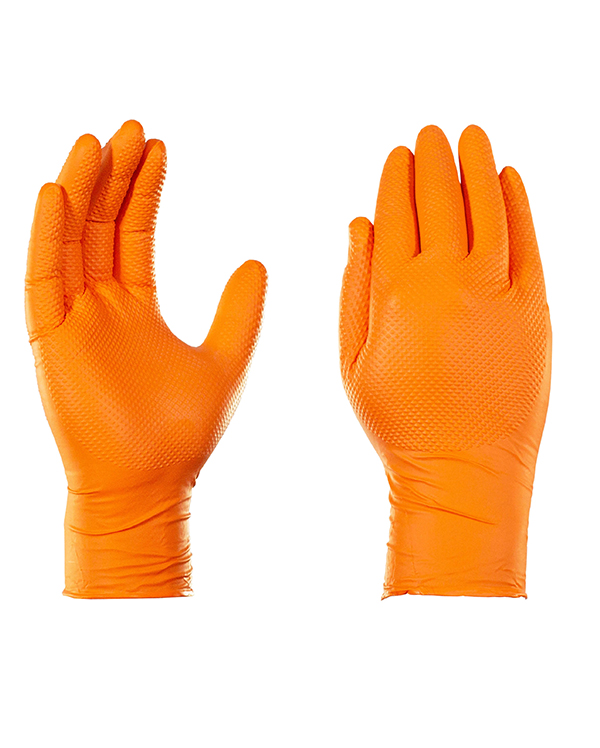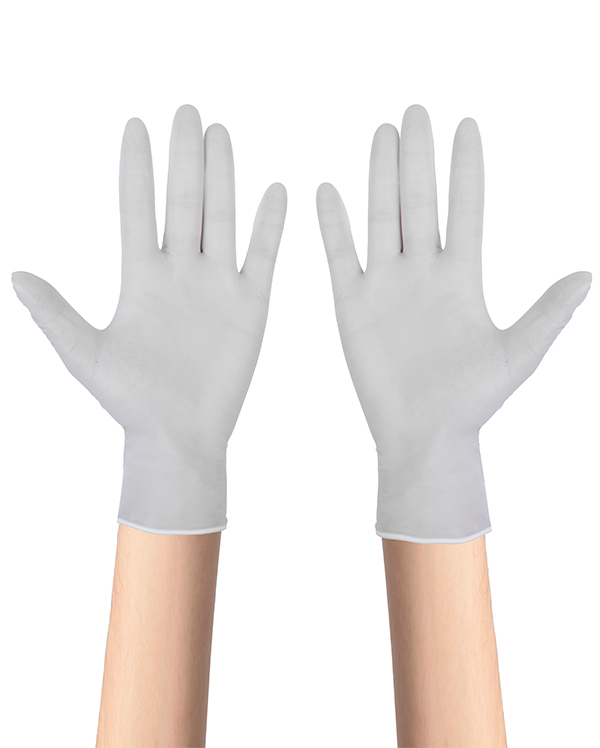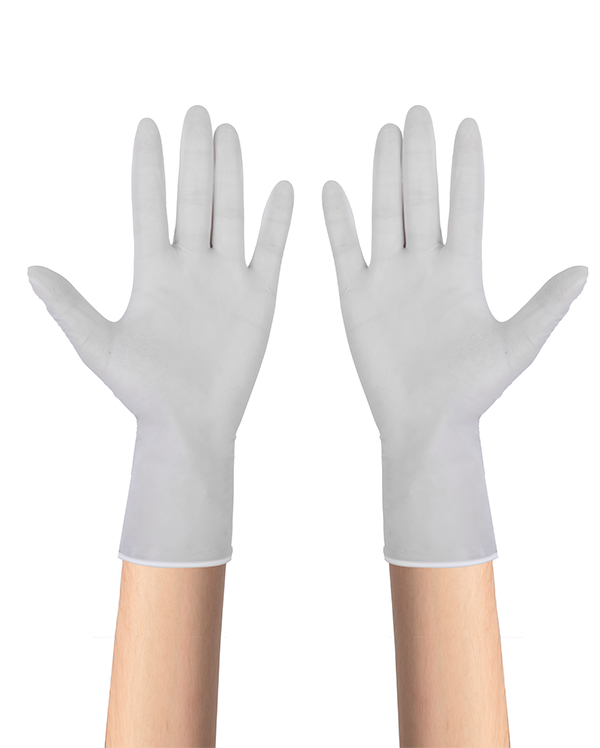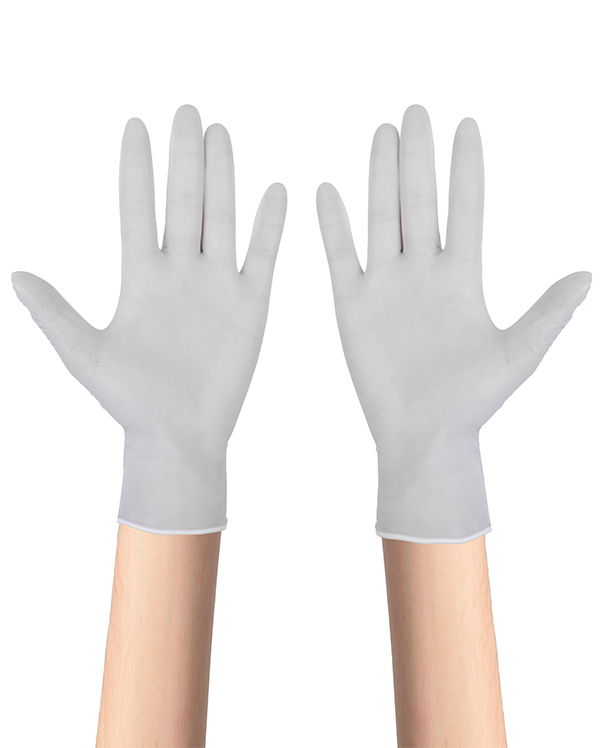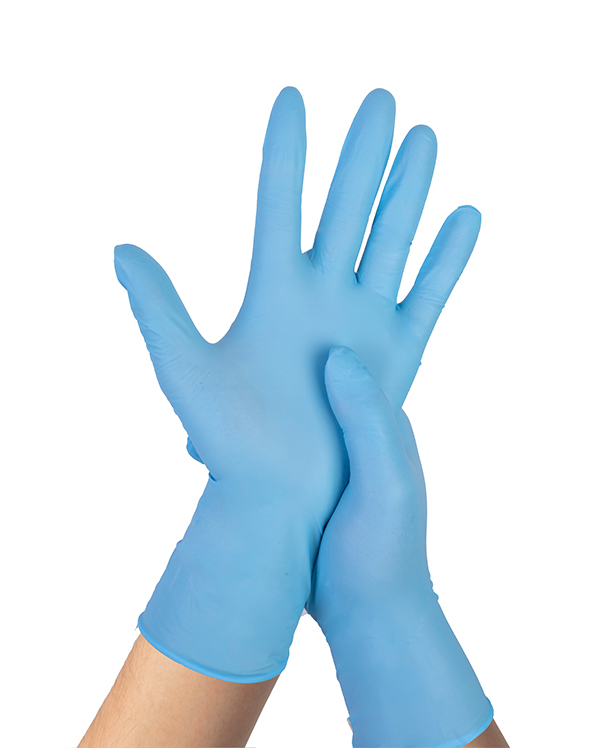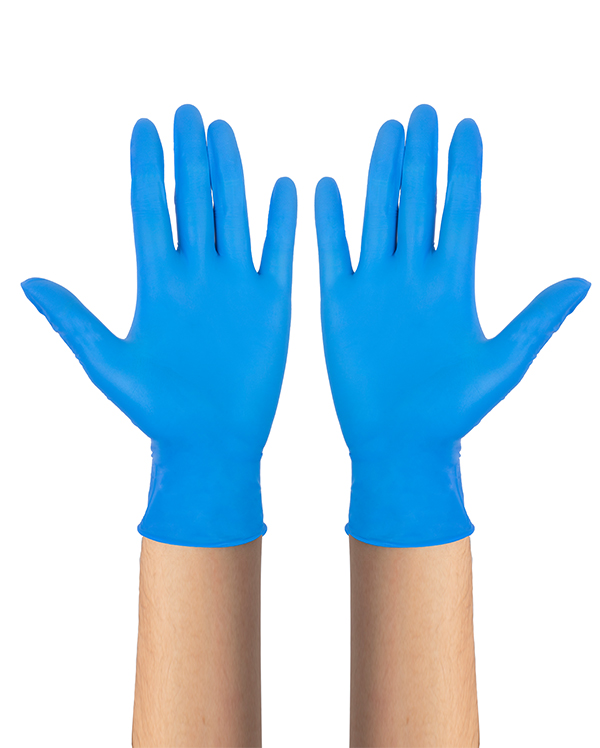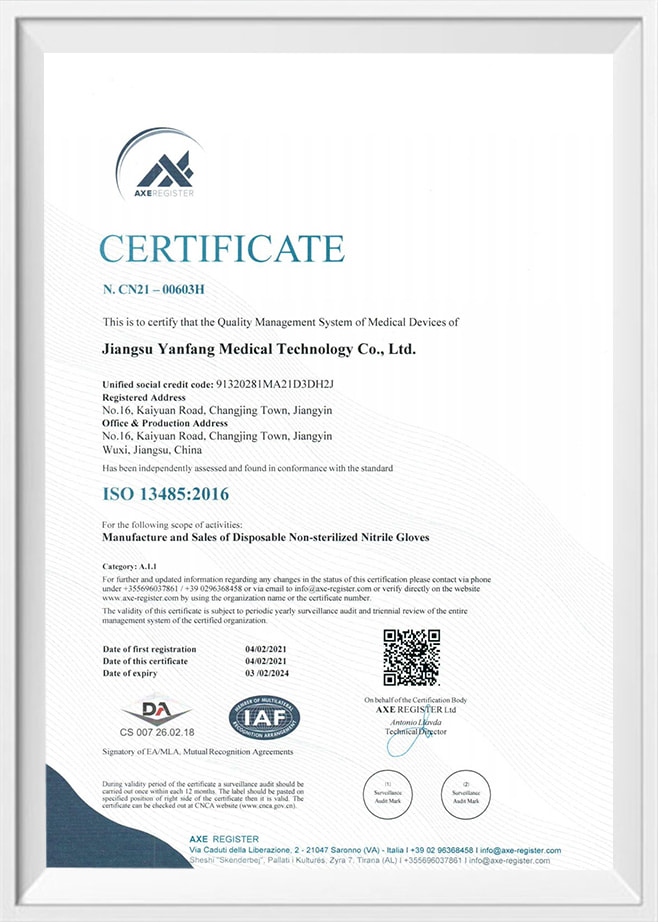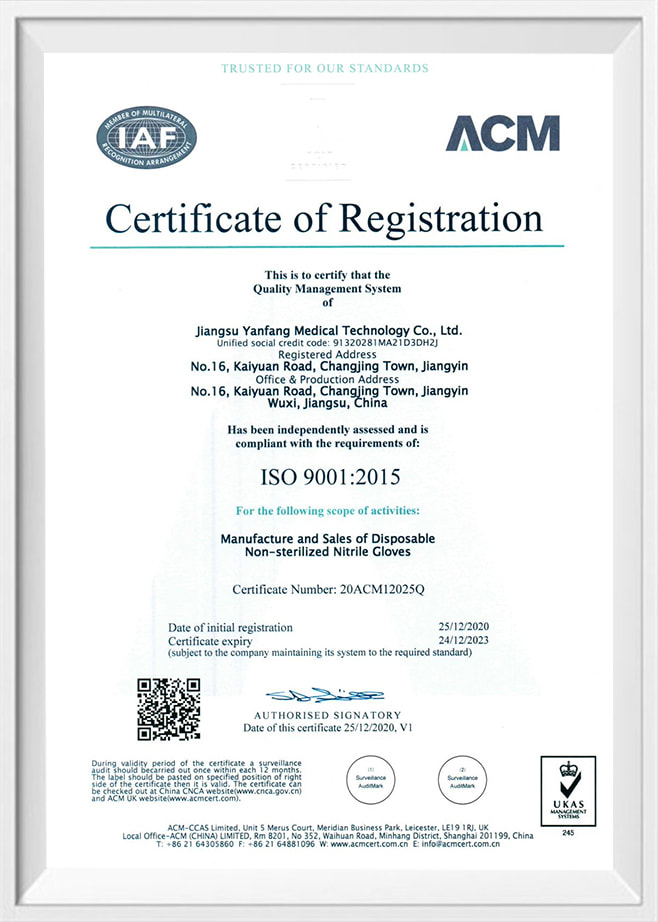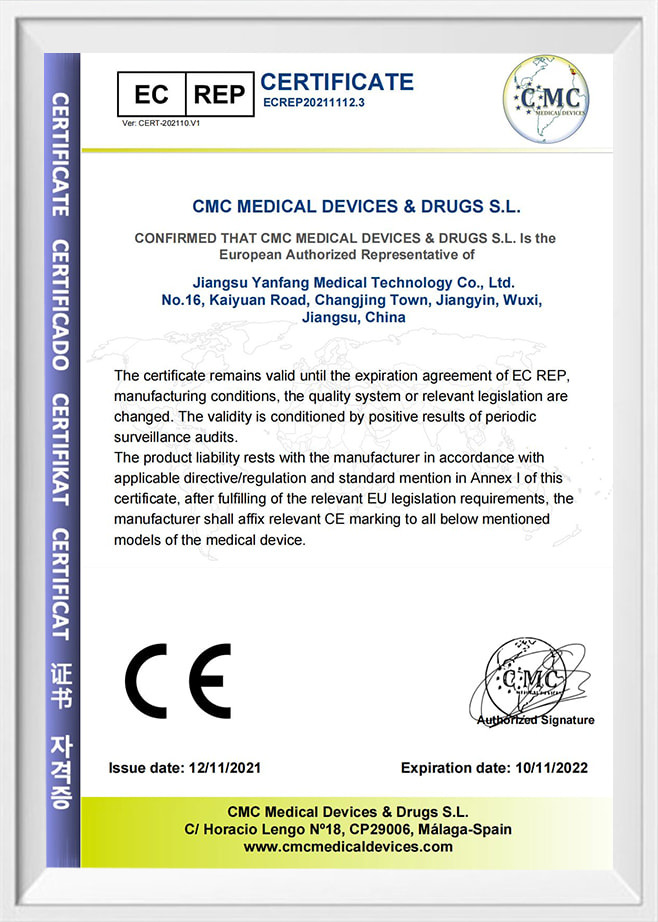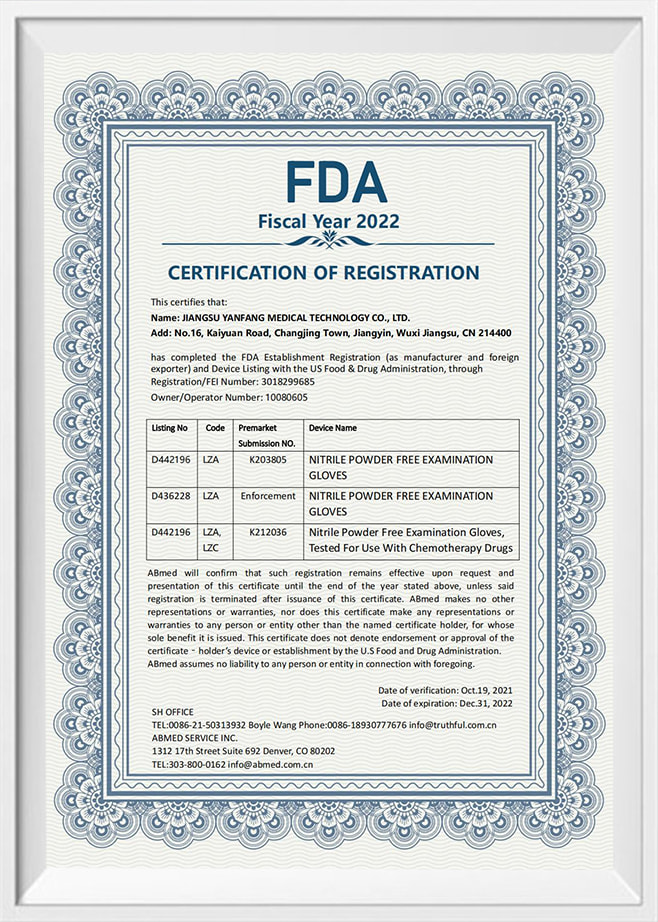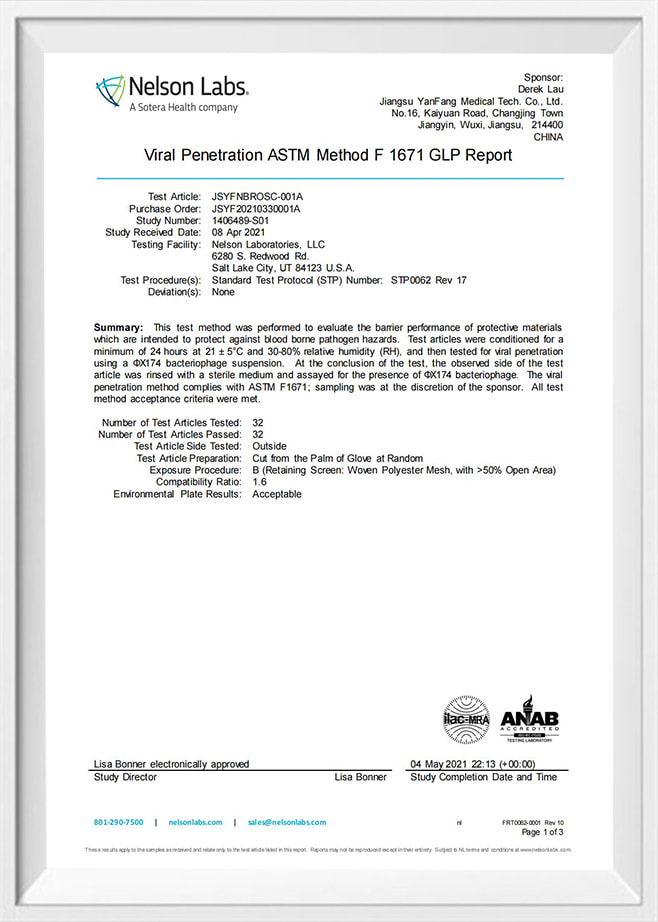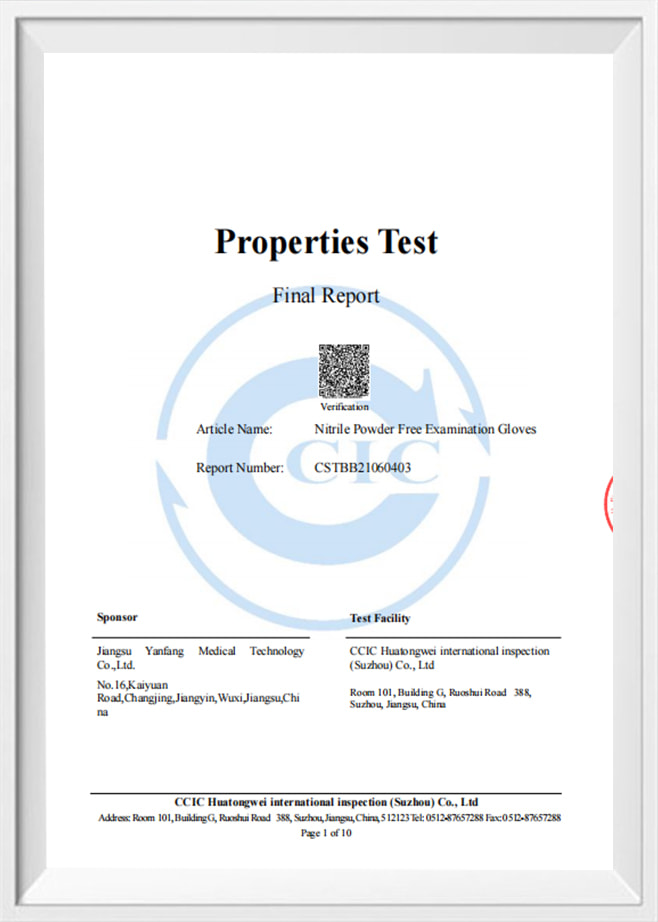How does the structure of Diamond Pattern Nitrile Protective Gloves affect the chemical resistance of the gloves?
Surface Enhanced Chemical Resistance: Diamond Pattern typically creates a raised pattern on the surface of the glove, which increases the surface contact area between the glove and chemicals. This design can improve the resistance of the gloves to liquid chemicals and slow down the penetration of chemical substances, thereby improving the protective performance of the gloves.
Diamond Pattern's concave and convex texture can provide better friction on the glove surface, helping to maintain a stable grip in wet or greasy environments. This is especially important for those working in chemical laboratories, manufacturing or other industrial settings, where gloves need to provide good handling properties.
The design of the Diamond Pattern may make the gloves more wear-resistant because the raised parts can disperse surface friction and reduce friction and wear during use.
The Diamond Pattern's geometry improves the overall stability of the glove, making it more difficult for chemicals to penetrate it. This structure may slow down the erosion of chemicals on the gloves and increase the service life of the gloves.
In what industries and work environments are Diamond Pattern Nitrile Protective Gloves mainly used?
Diamond Pattern Nitrile Protective Gloves are primarily used in work environments that require a high degree of chemical resistance and abrasion resistance. Here are some of the main industries and work environments where these gloves may be used:
Chemical Industry: Diamond Pattern Nitrile Protective Gloves are widely used in the chemical industry due to their excellent chemical resistance. Workers may need to work with a variety of chemicals, solvents and oils, and this glove provides protection.
Pharmaceutical Industry: In pharmaceutical production and laboratory environments, protective gloves are required to prevent contact with drugs and chemicals. Diamond Pattern Nitrile Protective Gloves provide essential protection in these scenarios.
Laboratory Work: In a science laboratory, researchers may be required to handle a variety of laboratory reagents and chemicals. The chemical resistance of this glove makes it ideal for laboratory work.
Manufacturing: Diamond Pattern Nitrile Protective Gloves may be widely adopted in manufacturing, especially in areas where gloves are required to be wear-resistant and slip-resistant, such as assembly line work, machinery maintenance, etc.
Medical Field: This type of glove may also be used in some medical settings, especially those where enhanced protection is required. For example, additional hand protection may be required when handling chemicals or when performing certain medical procedures.
Cleaning and Hygiene Services: In cleaning and hygiene services, these gloves can be used to handle detergents and other chemicals while providing hand protection.
Overall, the Diamond Pattern Nitrile Protective Gloves are suitable for use in work environments where hands need to be protected from chemicals, solvents, and other harmful substances while on the job. When choosing gloves, you should make an appropriate selection based on the specific work scenario and the performance characteristics of the gloves. It should be noted that the specific Diamond Pattern design may vary from manufacturer to manufacturer, so the exact impact may be affected by multiple factors such as glove construction, materials and production processes.
 Email: [email protected]
Email: [email protected]  Fax: +86-0510-86302212
Fax: +86-0510-86302212
 Telephone: +86-0510-86301263
Telephone: +86-0510-86301263
 Phone: +86-195 5190 0352
Phone: +86-195 5190 0352





 English
English  中文简体
中文简体
